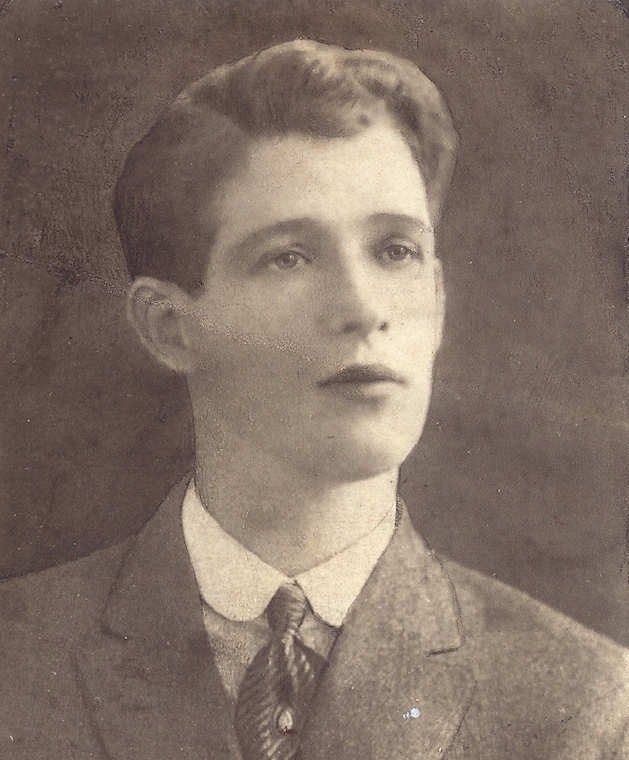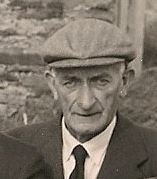The Role of Ignatius O'Neill in The Rineen Ambush
Early autumn 1920 saw one of the most memorable encounters of the War of Independence. On the 22nd of September 1920 the Rineen Ambush occurred. It was one of the most important military incidents of the War of Independence, both in Co. Clare and nationally. The main purpose of the ambush was to get revenge for the murder of Martin Devitt, a comrade, killed the previous February during the Crowe’s Bridge Ambush. Also, the Rineen Ambush aimed to get arms for the area and the Mid Clare Brigade.
The Rineen Ambush was a well-planned ambush by a trained officer, Comdt. Ignatius O’Neill. Comdt. O’Neill was born in Miltown Malbay in 1896. On completion of his studies at Blackrock College he immigrated to America and crossed into Canada at the outbreak of WWI and joined the Irish Guards. He served at Ypres and the Somme where he was injured and then returned to Ireland and joined the 4th Battalion Mid Clare Brigade. His previous military experience meant he was quickly promoted within the IRA and was the officer in charge on the day of the Rineen Ambush. Ignatius was close friends with Martin Devitt and saw to it that Martin’s death would not go unnoticed or unpunished. His military background also meant he had great experience and would not go into the ambush solely for the purpose of retribution.
On the night previous to the attack, John Joe Neylon visited O Neill who was still recovering from the wounds he had received at Crowe’s Bridge and was staying safe in Lisdoonvarna. The officers at the Mid Clare Bridge had decided not to include O’Neill in the attack because he was still recovering from his wounds, and kept all the information regarding the planned attack at Rineen from him. When John Joe Neylon met him, O’Neill had already though heard of the plans and he was furious. O’Neill accused Neylon of being a “double-crosser”. Neylon told him to take charge; he then gave him the arrangements that had been made which O’Neill made no initial changes to.
The 4th Battalion, Mid Clare Brigade noticed that an IRC lorry did a regular patrol from Lahinch to Miltown Malbay. They then decided that Dromin hill would be an ideal spot to ambush the patrol. A tactical advantage was that Dromin Hill was 400 feet high. It was possible to see enemy lorries coming from either side from the top of Dromin Hill. As I have seen from maps obtained from the local studies section of the library there was good cover at one side of the road but little cover on the other side. It was decided that this side then should be manned by two armed experienced men. A boreen leading from the main road was to be the main line of attack. It had protective natural cover as seen from the maps I obtained from the local sources section. The trees and shrubs gave the attackers great cover from passing trains and from the road. Under O Neill’s command a single rifle shot from Neylon was to be the signal to open the attack.
On the morning of the ambush as the lorry was coming along the Miltown road a wrong signal was given, the message “police coming” had been misinterpreted by one of the IRA’s scouts as “three lorries coming”. O’Neill with reports that the enemy force was much larger than expected decided in view of the scout’s message to withhold fire. Realising the mistake O’Neill sent Jack Clune an IRA Volunteer to cycle to Miltown Malbay and report back immediately if the volunteers had been seen by the British. The men had three hours to wait before the lorry would return. In this time O’Neill made some changes, he moved the rifle men in the first attacking party into a more suitable position to attack the lorry on its return from Miltown and made a few more changes to the IRA’s other positions.
When the lorry did return, O’Neill gave the order to Neylon to fire the opening shot. Two grenades were thrown at it but missed the target of the lorry and landed in a nearby field. The blast however was strong enough to kill the driver and two of the party of six on the lorry. Two men had jumped clear of the blast, one straight into the arms of his attackers and was shot dead. The second fled towards the sea. Within seconds of Neylon firing the opening shot the attack had ended. As soon as the firing stopped O’Neill gave the order to cease fire and search the vehicles. There were five rifles and a thousand rounds of ammunition in total.
The volunteers were now confident they had won the day, but what they didn’t realise was that a British judge, Captain Lendrum, has gone missing that morning, meaning that a British army search party had been sent out to look for the British judge. While the volunteers are still searching the lorry a British army lorry came into view, the first of a massive convoy. Immediately O’Neill gives the order to retreat across the railway line. The new rifles and ammunition were quickly distributed amongst the volunteers and they proceeded to take cover in ditches and the fighting continued for three hours. Although early in the fighting, O’Neill was wounded in the thigh and was removed. By this time most of the ammunition had been used up but not without results. When the British got on top of the hill, they began to use their machine guns but by this time the volunteers were already deeply entrenched. A final effort was made by the British when four of their men tried to storm the volunteers, but all were shot down. The IRA had defeated a vastly superior force.
As soon as the volunteers had escaped the scene, there was a series of reprisals in Miltown Malbay. That night members of the RIC, Black and Tans and British soldiers engaged in reprisals not only in Miltown Malbay but also in Lahinch and Ennistymon. Seventy houses in total and business premises were burnt in total including a hardware shop belonging to Ignatius O’Neill’s father. Six people were killed, five civilians and one IRA volunteer.
Although the results of the reprisals were cruel the IRA had fulfilled their original aims of the ambush under Ignatius O’ Neill’s command they had avenged the death of Martin Devitt. Not only did they succeed in killing the British troops they set out to kill but they also killed far more in the second phases of the ambush. They may not have come out of the ambush with much money or ammunition, but they had done what they set out to do and that was to kill the British and get revenge or the killing of their fellow IRA member and Vice Commanding Officer, Martin Devitt.
By Julie Ann Byrnes who is studying Applied Social Sciences in NUIG, and still has a love and interest in History from her days as a pupil at St. Josephs Secondary School, Spanish Point.


